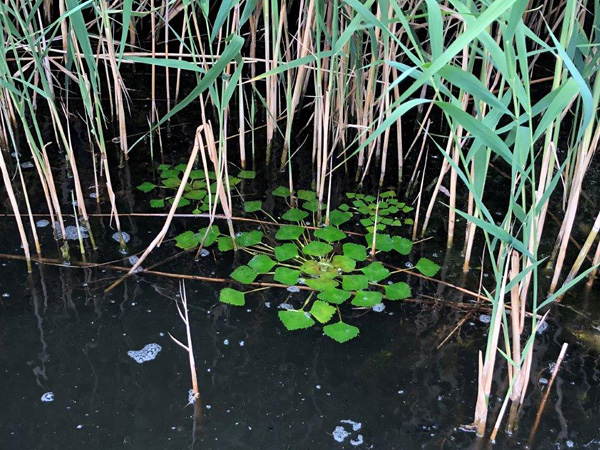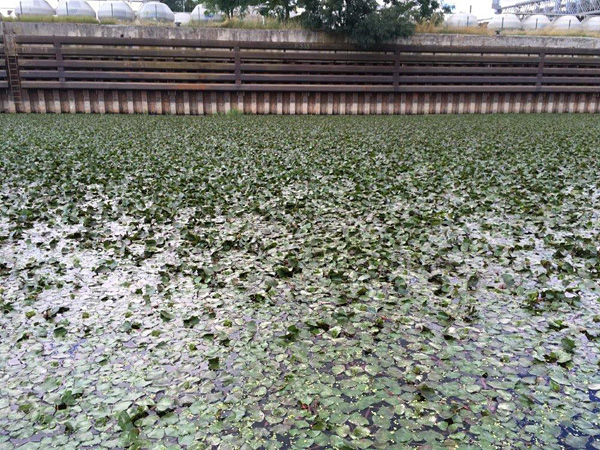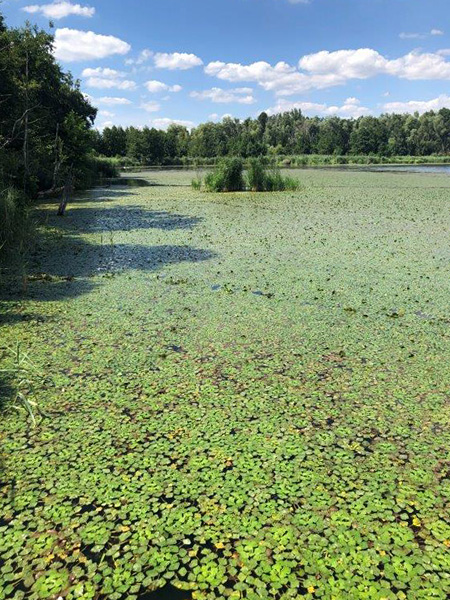Will climate change enable the expansion of the water caltrop (Trapa natans)?
Most of the scientific work devoted to assessing the impact of global environmental change, including climate change, on species distribution concerns either the spread (invasion) of alien species or the shrinking ranges of native species. The expansion of the latter is less often described. An example of a species whose native range has ceased to decline and is now expanding is the water caltrop (Trapa natans s. l.) – an annual plant that grows in standing or slow-moving water. Water caltrop occurs naturally in Asia and Europe, where the northern limit of its range is defined by reservoirs where the water temperature reaches 22 °C for at least two months during the growing season. In Europe, water caltrop is strictly protected (see Appendix I of the Bern Convention and the Polish Red Book of Plants) as a species that until recently was rare, endangered and in places, e.g. in Lithuania and Spain, considered extinct. In the last decade, the situation of water caltrop has changed – it has started to appear abundantly both in historical sites (i.e. where it was recorded in the past) and in completely new places.
Recently, the journal Ecological Indicators published a paper in which Elżbieta Cieślak and Magdalena Szczepaniak from our Institute, together with scientists from the Institute of Nature Conservation of the Polish Academy of Sciences, analysed information on the past and present occurrence of water caltrop in the northern part of its range in Central Europe and created models for the spread of the species based on different climate change scenarios (wordClim). The study showed that the mean temperature of the warmest quarter and precipitation in the driest month of the year were the most important predictors of habitat suitability for water caltrop and that an increase in mean annual temperatures of more than 2 °C recorded since 1951 favoured the population expansion of the species. The model for 2021–2040 predicts the expansion of water caltrop across central and eastern Europe and towards the north (UK and Ireland, Scandinavia). In the next two periods (2041–2060 and 2061–2080), the entire area of Europe, except for high mountain regions and Spain, will be suitable for colonisation by this species.
According to the authors, water caltrop, as a thermophilic species, can be a good indicator of changes in aquatic ecosystems related to global temperature dynamics. The authors predict that species hitherto classified as rare in their native range will appear in increasing numbers and colonise new sites, becoming, in extreme cases, expansive species that threaten local biodiversity. This group of species may be in urgent need of review, including updating data on occurrence sites and population trends. Gaining such knowledge may be important for planning future conservation efforts.
You can read more about research on water caltrop on the "Nauka w Polsce (Science in Poland)" website (in Polish only). We also encourage you to visit the website, where you will find a map of water caltrop localities in Poland, which is constantly updated and to which anyone can add a locality they have found.
The original article:
Walusiak E., Krztoń W., Cieślak E., Szczepaniak M., Wilk-Woźniak E. 2024. Native recovery or expansive threat? Past and predicted distribution of Trapa natans L. s. l. on northern limit of species' range – Handout for species management. Ecological Indicators 158: 111349. DOI

Population of water caltrop in Lake Teupitz, Germany, 2003.
Photo: Edward Walusiak

Population of water caltrop in the Oder river harbour in Ścinawa, Poland, 2023.
Photo: Edward Walusiak

Population of water caltrop in Lake Krossinsee, Germany, 2023.
Photo: Edward Walusiak





